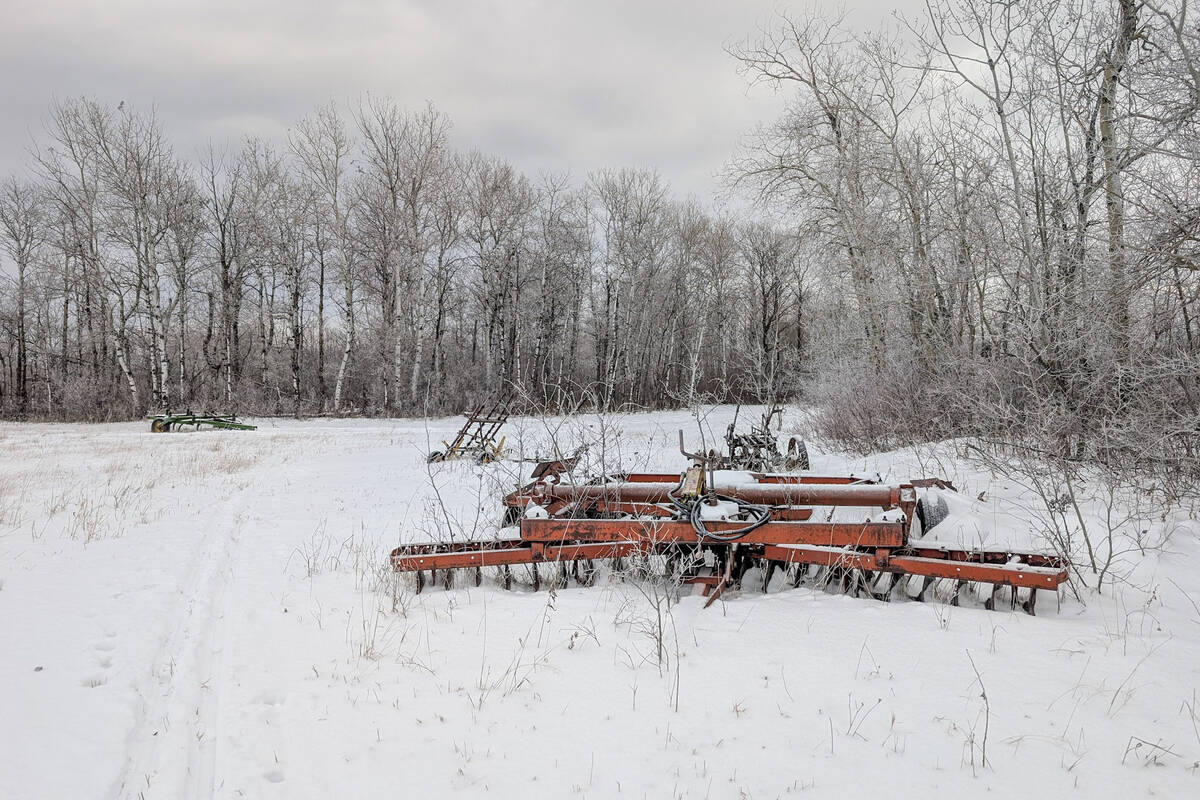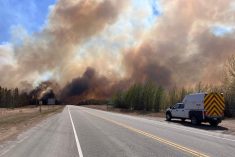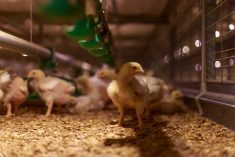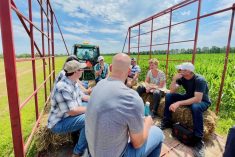The new federal-provincial ag policy funding framework due to take effect next April 1 will include a new ecological goods and services plan and a sweetened compensation rate for AgriStability.
Following meetings this week in Saskatoon, federal Agriculture Minister Marie-Claude Bibeau and her provincial and territorial counterparts on Friday mapped out the bones of their next five-year ag funding framework, to be called the Sustainable Canadian Agricultural Partnership.
“As the provincial-territorial co-chair, we are pleased with the increased funding all parties have committed to today,” the ministerial co-chair, Saskatchewan Ag Minister Dave Marit, said in a release. “I believe we have found the proper balance between economic and environmental objectives to ensure our industry remains globally competitive.”
Read Also

Prairie forecast: Northwesterly flow brings seasonable temperatures, weak systems
This forecast period is dominated by two lows — one to the far west, and one over Hudson Bay. The relative strength of the two lows will determine temperatures across the Prairies.
Where the current five-year Canadian Agricultural Partnership — agreed upon in 2017 for the 2018-2023 period under Bibeau’s predecessor Lawrence MacAulay — committed the feds and provinces to $2 billion in funding for cost-shared programs, the new partnership deal will raise that figure to $2.5 billion, up 25 per cent.
RALP
Part of the thicker cost-shared envelope — $250 million — will go to fund a new Resilient Agricultural Landscape Program (RALP), which is meant to support ecological goods and services provided by the agriculture sector.
The ministers “agreed in principle” on that program, with details to come later, though they said it will be administered by the provinces and territories, based on “nationally consistent principles (and) tailored to regional needs and conditions.”
Existing programs that “respect the guidelines” for RALP, such as Prince Edward Island’s Alternate Land Use Services (ALUS) program, Quebec’s Programme de Rétribution des pratiques agroenvironnementales, and Manitoba’s Growing Outcomes in Watersheds (GROW), will be “able to benefit from the new federal funding,” the federal government said in its release Friday.
AgriStability
The new partnership also commits the feds and provinces to boost the compensation rate for the AgriStability ag income stabilization program to 80 per cent, up from the current 70, which is expected to provide another $72 million per year for enrolled farmers.
Under AgriStability, a payment is triggered when a participating farmer’s production margin for a given program year falls more than 30 per cent below their reference margin. Under the current framework, AgriStability covers 70 per cent of the farmer’s decline beyond that 30 per cent mark.
That said, the ministers added Friday they’ve agreed to “continue to work, and consult with industry, on a new AgriStability model that will be faster, simpler and more predictable.”
The governments taking part in the ag policy framework said they’ve “identified key changes” to improve AgriStability and plan to “further analyze and implement this new model while ensuring a smooth transition.”
As for other business risk management (BRM) programs operating under the partnership, the ministers committed to a one-year review on “how to integrate climate risk and readiness” in those programs.
Under that review, the provinces would identify “potential incentives” and then launch a pilot for producers who adopt environmental practices that also reduce their production risks.
The ministers also agreed that in order to receive a government contribution to their AgriInvest accounts, farmers who have allowable net sales (ANS) of at least $1 million will need to have an agri-environmental risk assessment (for example, an Environmental Farm Plan) in place by 2025.
The ministers noted the BRM programs will still “continue to focus on production risk.”
‘Results strategy’
The ministers also said they agreed on “the need for a more robust results strategy” for the 2023-28 partnership, which will involve “improved data sharing, results reporting, and a commitment to contribute to common, measurable outcomes” over that time.
Those outcomes include reduction in the sector’s greenhouse gas emissions by between three million and five million tonnes; $250 billion in ag sector revenues and $95 billion in sector export revenues by 2028; and a measurable increase in funded recipients who are Indigenous Peoples, women and youth over that time.
The ministers noted Quebec is “already implementing policies and strategies to provide targets, indicators and accountability processes that meet the priorities and objectives set out in this agreement” and will not be subject to the framework target’s commitments but rather will “contribute to collective results” through its own targets and accountability mechanisms.
Fertilizer emissions
Curbing the ag sector’s greenhouse gas (GHG) emissions from fertilizer was a sore spot among participating ministers. In their joint release, they said they “discussed the importance of ensuring that efforts to reduce emissions from fertilizer or other agricultural sources do not impede Canada’s ability to contribute to domestic and global food security, now or into the future.”
The discussions, they said, also “mentioned” ongoing consultations undertaken by the feds to develop “voluntary approaches” to achieve Canada’s target of reducing absolute GHG emissions associated with fertilizers by 30 per cent below 2020 levels by 2030.
That 30 per cent target was first laid out in the federal climate plan in late 2020. The ministers said Friday it was “reiterated” at their meeting that the 30 per cent target “applies to emissions and not fertilizer use.”
However, Marit, in a separate release, said his government is “really concerned with this arbitrary goal,” adding the Trudeau government “has apparently moved on from their attack on the oil and gas industry and set their sights on Saskatchewan farmers.”
Marit and his Alberta counterpart Nate Horner, in a joint statement Friday, said the provinces had “pushed the federal government to discuss this important topic, but were disappointed to learn that the target is already set.”
The commitment to future consultations, Marit and Horner said, is “only to determine how to meet the target that Prime Minister Trudeau and Minister Bibeau have already unilaterally imposed on this industry, not to consult on what is achievable or attainable.”
“The federal government needs to be true partners, rather than simply imposing targets that make it harder,” Ontario’s Agriculture Minister Lisa Thompson said in a separate statement, adding the provinces were “disappointed by the lack of flexibility and consultation regarding the federal target.”
Reaction
The Canadian Cattle Association, in a separate release late Friday, said with the new framework’s increased funding envelope, the beef cattle sector “is now better equipped to deliver on some of the ambitious environmental and productivity goals as set by the national beef strategy partners.”
“Today’s announcement is a recognition that the (ag ministers) heard our concerns,” CCA president Reg Schellenberg said in the release.
The CCA hailed the RALP program announcement as “a welcome investment for beef producers who perform these services as a byproduct of raising beef” and noted the increase to the AgriStability compensation rate has “long been advocated for by the beef sector.”
Bill Campbell, president of Keystone Agricultural Producers, said the group “remain(s) concerned with the increase in GHG reduction targets… This will need clear and transparent data sources and measures, but we have yet to see which data and life cycle analysis will be used to determine these targets.” — Glacier FarmMedia Network
















